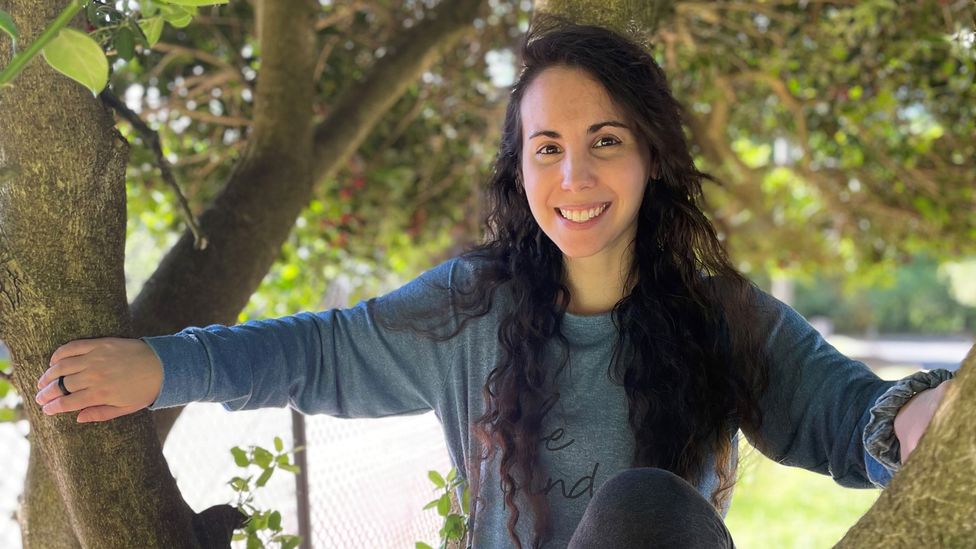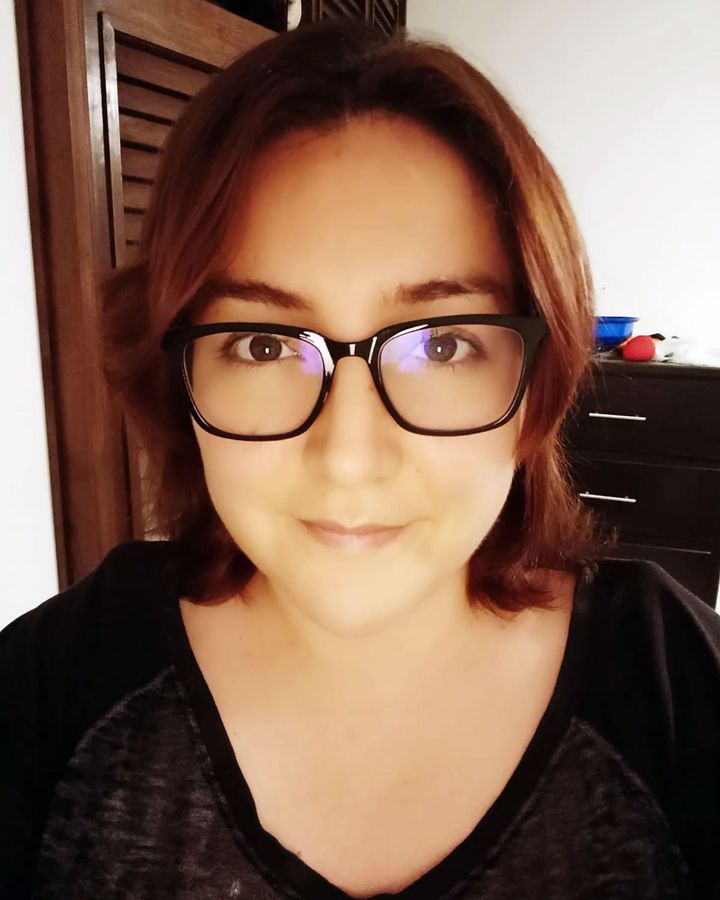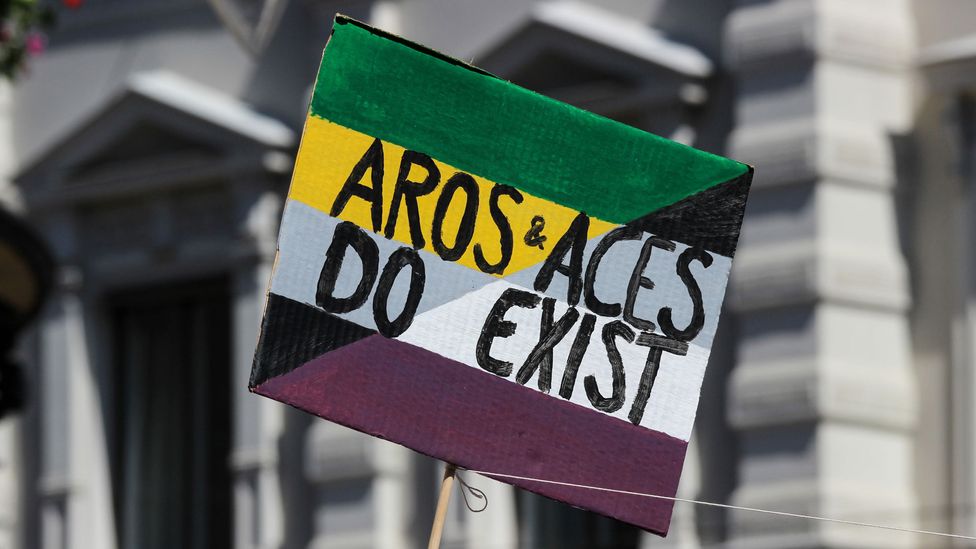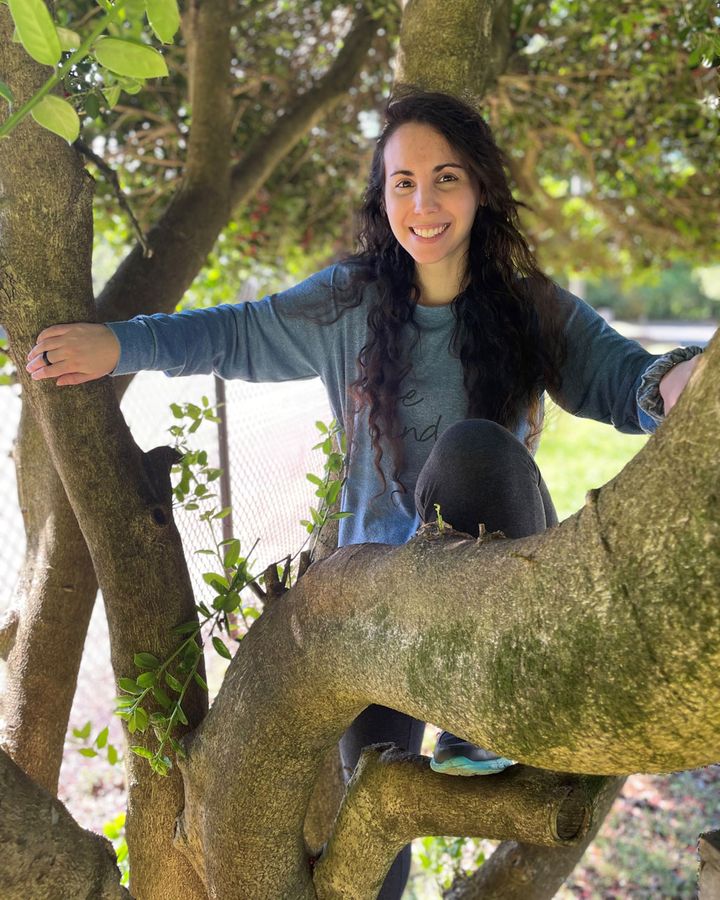EQUALITY MATTERS | HOW WE LIVE
Asexuality: The ascent of the 'invisible' sexual orientation
(Image credit: Courtesy of Marissa Manuel)

By Jessica Klein12th May 2021
Long in the shadows, asexuality is finally becoming increasingly visible. It could help young people find themselves and their identities, and change the way we think about sexuality.
Asexuality: The ascent of the 'invisible' sexual orientation
(Image credit: Courtesy of Marissa Manuel)

By Jessica Klein12th May 2021
Long in the shadows, asexuality is finally becoming increasingly visible. It could help young people find themselves and their identities, and change the way we think about sexuality.
I
In a live video stream on 6 April, UK-based model and asexual activist Yasmin Benoit moderated a panel featuring participants from Belgium, Brazil, Vietnam, Pakistan, Nepal and Nigeria. All of them identify as somewhere on the asexual (“ace”) and/or aromantic (“aro”) spectrum. The panellists discussed their involvement in their respective countries’ asexuality community, as part of an event honouring the first ever International Asexuality Day.
Their experiences vary, from well supported to outright dangerous. In Belgium, Martine said she’s found support and inclusivity from her government and the country’s wider LGBTQ+ organisation; on the other end, Jan in Nigeria noted that laws “criminalise queer gatherings”. But, regardless of global location, the issue of visibility was at the core of nearly all their responses.
Indeed, asexuality – defined generally as not experiencing sexual attraction – has been called “the invisible orientation”.
It tends to be misunderstood and under-discussed; people may not believe someone can really be asexual, or they dismiss asexuality entirely. Common misconceptions about asexuality include that asexuality equates to celibacy (it doesn’t), or that it’s a choice (it’s an orientation), says Michael Doré, a member of the global Asexual Visibility and Education Network’s (AVEN) project team. Some also incorrectly believe that someone is only asexual if they never experience sexual attraction or have sex. But asexuality is a spectrum, where some may identify as demisexual, for example, meaning they don’t experience sexual attraction until forming an emotional bond with someone. It’s also not synonymous with aromanticism, which applies to those who don’t experience romantic attraction.
Despite confusion and dismissal, asexual voices have been getting louder and demanding recognition over the past decade. Individuals, activists and groups have begun telling their stories to larger audiences, and marching in Pride parades worldwide. Now, asexual activists’ efforts lie in keeping up this work, and amplifying asexual voices outside Western, English-speaking countries, where the majority of asexual activism and stories have come from.
As a result, along with the new international holiday, initiatives are popping up to take asexuality out of the shadows – making it easier for people to come out as asexual all over the world.
Story continues below

34-year-old Anahí Charles is the admin of an asexuality Facebook group in her home country of Mexico (Credit: Anahí Charles)
‘It’s not such a big deal as before’
A limited awareness of asexuality has made it harder for past generations of young people around the world to realise their identities – even as recently as millennials.
Anahí Charles, 34, who lives in Mexico, first began to learn she was different from her peers in middle school. While they all fawned over members of the US boy-band Backstreet Boys, Charles couldn’t quite see the appeal. They looked “aesthetically nice”, she says, but she couldn’t grasp what it was that made her friends so crazy about them.
It took Charles several years – well after this incident in her youth – to learn about the orienntation and find her place on the ace/aro spectrum. Without resources about asexuality, Charles says she was “in denial” about not experiencing sexual attraction to anyone. Even after she first learned about asexuality through a post on the Facebook page Have a Gay Day, in 2013, she still questioned whether something was “wrong” with her. Charles got medical examinations and hormone checks to try and figure it out. She was completely healthy.
Her clean bill of health served as a catalyst for self-acceptance. She found more information about asexuality on Facebook, and realised just how much she related to it. A year later, she became the admin of an asexual Facebook group in Mexico.
Similarly, in the US, Marisa Manuel, 28, struggled to name her orientation. She first heard the term “asexual” when she was in high school, but says she was “misinformed” about its meaning. “Someone told me it meant people who wanted to be alone,” she recalls. “I like being around people.”
In college, she met someone who identified as ace, which prompted her to learn more about what it really meant. She realised how much she related to what she found, and has since embraced her identity wholly – she’s gone on to write articles about identifying as ace as well as review books by ace authors.

Although things are changing, asexuals and aromantics have historically faced challenges with visibility and recognition (Credit: Alamy)
Fortunately, younger generations may now be set up to find out about asexuality sooner – and may also be more empowered to vocalise their identities. The number of resources and amount of representation has grown significantly since Charles and Manuel were growing up. Along with increasing information available writ large, people also readily identify as ace on social media platforms, and are keen to share details about their experiences with other users.
‘Representation is a resource’
Increased representation is key for enabling people to recognise and understand asexuality as well as normalise the orientation. “Representation is a resource,” says Manuel. And although some resources have increased, representation – especially in mainstream media – isn’t where it needs to be, she adds.
However, there are other places visibility is increasing. People with bigger platforms, such as UK model Benoit, drag queen Venus Envy and Twitch streamer 5up, all talk openly about identifying as ace to their large fan bases on various social media channels. There’s increased representation in literature, too; authors on the ace spectrum include Darcie Little Badger, Akemi Dawn Bowman and Maia Kobabe. Fictional characters also help, like Todd Chavez of Bojack Horseman, of whom Manuel has a plastic figurine.
Manuel is trying to add to this growing pool of representation. Leading up to International Asexuality Day, she created AceChat, an Instagram account where she regularly shares stories by different people who identify as ace. It’s garnered positive reception, and she keeps hearing from people who want to tell their stories. There are now about 100 people involved.
Manuel says the next step is to expand AceChat’s reach. People from France, Russia, Vietnam, the UK and Canada have already begun to reach out, and translators have also joined the effort. And translation can be critical, because some locations have smaller ace communities than others, meaning they often have fewer resources and less information available for people seeking to learn about asexuality in their language.
We had even people from the LGBT community pitying us, saying, ‘it sucks to be you’. But we didn’t give up – Anahí Charles
In Moscow, Daniel, 20, who is withholding his surname for saftey concerns, says the ace/aro community he’s a part of only has about 50 members. “Not so many people know about terms like ‘asexual’,” he says, perhaps in part because of the country’s intolerance of LGBTQ+ communities. Since so many ace stories and materials are in English, Daniel has been working to translate them into Russian. He’s optimistic that asexuality will get more recognition in the coming years, even in his home country.
‘We didn’t give up’
Along with ace communities’ historical struggles to gain wider visibility, they’ve also had to work to be seen within LGBTQ groups. This may be surprising, since the asexuality identity is also often included when referencing queer communities (for instance, in the inclusion acronym ‘LGBTQIA’, in which ‘A’ stands for ‘asexual’.)
Charles, who’s hosted asexual gatherings in Mexico City, experienced this first hand. She says her group first marched as a collective in Pride in 2015, but the larger LGBTQ community there hadn’t quite accepted people identifying as ace with open arms. “We had even people from the LGBT community pitying us, saying, ‘it sucks to be you’,” she says. “But we didn’t give up.”
Groups like Charles’s and their subsequent educational initiatives have indeed helped move the needle. Charles says that when she returned to Pride with a larger group the next year, “we were better welcome because there was more information”. “It wasn’t like, look at the weirdos, they’re marching again,” she says. “It was like, look at the asexuals, they’re marching again.”
In this push for acceptance, asexuality groups have been growing and thriving. One of the most prominent international asexuality groups is AVEN, founded in 2001 by US-based asexual activist David Jay. Michael Doré, who joined the organisation in 2009 in the UK, says AVEN came into existence with two main objectives: “building community and… legitimising asexuality as a sexual orientation”. Its growing membership currently numbers 135,539, according to Doré.

In the US, 28-year-old Marisa Manuel struggled to name her orientation, but has now embraced the asexual identity (Credit: Courtesy of Marisa Manuel)
Now, opportunities to educate and raise visibility have stretched even further. AVEN, which recently celebrated its 20th anniversary, seized on the increase in virtual communications during the pandemic to strengthen its global connections. These international, virtual chats eventually turned to establishing a single day dedicated to celebrating asexuality all over the globe: International Asexuality Day (IAD).
“We felt this day was needed,” says Doré, who makes it clear that IAD is not owned by AVEN or any single organisation. “It’s a genuinely international thing.” The creation of the holiday not only establishes a yearly day of visibility, but also marks the flourishing of an intensive international effort to bring together an under-recognised community. It helps asexual individuals and groups in countries where information and representation is lacking gain access to resources.
These days, says Doré, there’s growing awareness of asexuality in countries across Asia – particularly India, he notes, where the Facebook group Indian Aces is thriving. New groups dedicated to asexuality have been popping up across Africa over the last few years as well, he adds.
While this is a good sign for progress, people continue to misunderstand asexuality. Manuel says she wrote an article about asexual dating for the Huffington Post two years ago, and it was well received. However, when the article was recently re-shared, “there were so many more negative reactions”, she says, in the piece’s comments section. People called her confused, insisting that she was really looking for friends, not dates.
“That made me realise that as far as we’ve come with representation and visibility, we’re not there yet,” she says.
